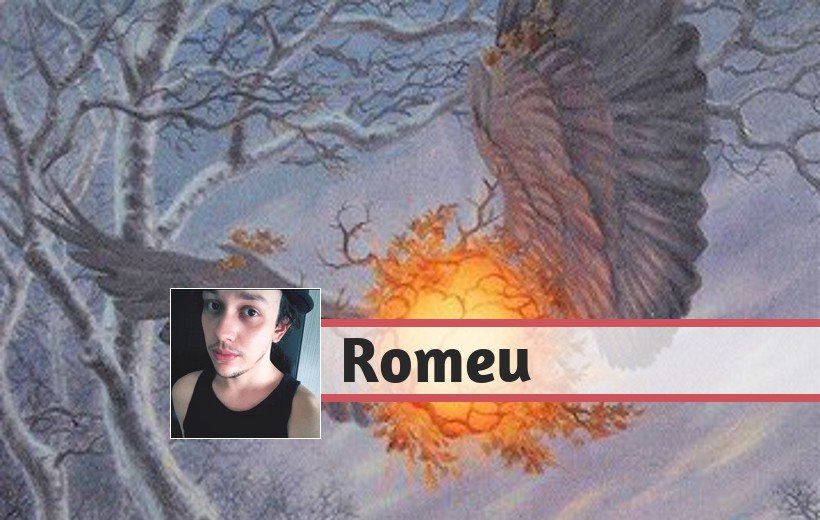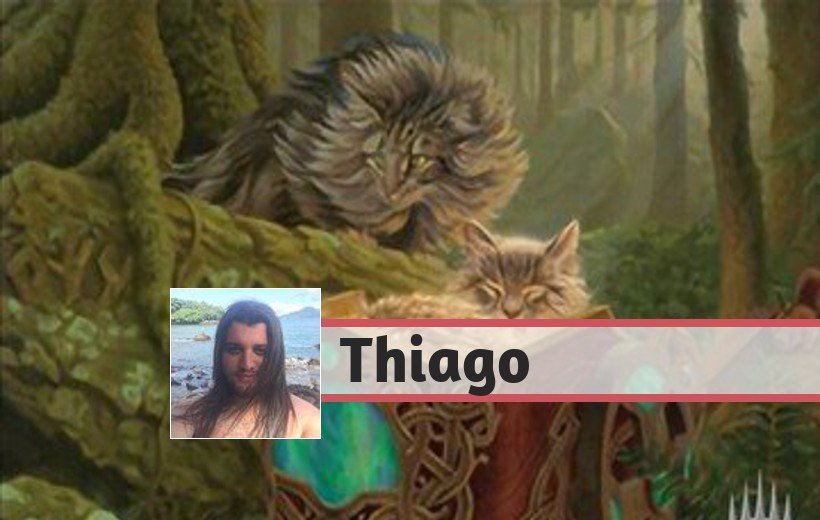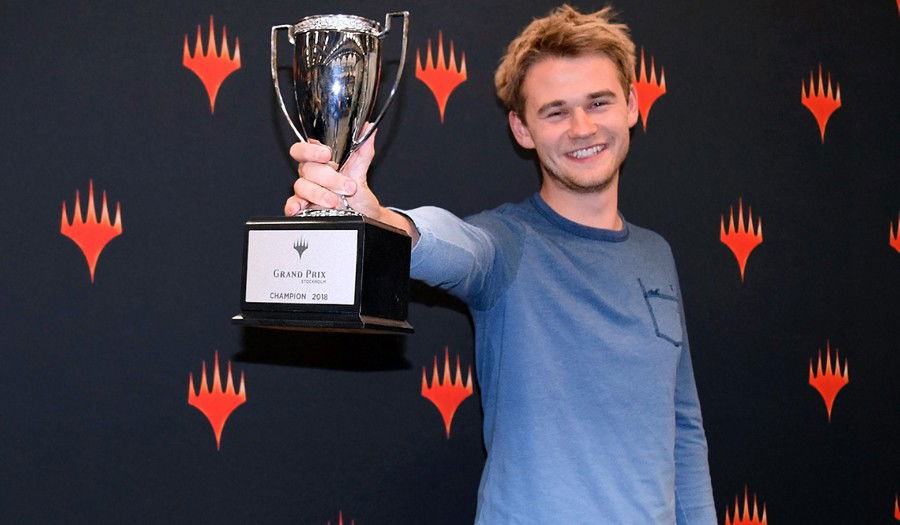Introduction

Vesperlark is an intriguing card that has always been on the verge of being playable or completely irrelevant, depending on the context of the format in which it can fit, and this is due to the success that its predecessor, Reveillark, had during its Standard days, with combos that are still used today at Commander tables and always lives in the hearts of those who witnessed Standard seasons that included the Lorwyn/Shadowmoor block.
But Vesperlark never achieved any of the success that his predecessor had. After all, Modern Horizons was a set dedicated entirely to Modern and brought staples for multiple formats that impacted and still impact eternal formats until today such as Force of Negation, Seasoned Pyromancer, Urza, Lord Hight Artificer, Yawgmoth, Thran Physician, the Canopy Lands, not counting cards that were banned like Arcum's Astrolabe, Hogaak, Arisen Necropolis and Wrenn and Six.
Amidst so much power level, Vesperlark becomes obsolete, irrelevant, unimportant for the formats in which it is legal, which sounds like a huge injustice with a card that seems to have so much hidden potential, just waiting for the set of right cards to come up to break it.
And that brings us to the present. Or rather, the future, as JumpStart: Historic Horizons has been pushed back to August 24, an exclusive Magic Arena set that will include more than 370 new cards for Historic, including exclusive cards and multiple cards of which were present in Modern Horizons and its successor, Modern Horizons II.
Vesperlark is among the cards present in Historic Horizons, and with it, a card that creates an interaction with the Elemental that never existed before in Magic, and that will never exist in tabletop Magic:

Perpetually will only exist in Magic Arena, and essentially, it works like this: A card that receives an effect perpetually retains that effect regardless of the zone it's in.
That is, a creature that has been targeted by a resolved Davriel’s Withering will have -1/-2 in literally any zone, this includes whether it is returned to the hand, put into a graveyard, or taken into exile.
Let's go back to Vesperlark, a creature that when it dies returns a creature with power 1 or less from the graveyard to play.
So, the combo works like this: You cast Davriel’s Withering on Vesperlark, which will become a 1/0 creature and die. Vesperlark's ability will trigger, you target itself in your graveyard as it has 1 power, and it will come back into play as a 1/0 creature, dying again and this loop repeats for infinite ETB and Death Triggers.
We have the loop, which unfortunately does absolutely nothing on its own, and therefore we need to find ways to abuse it.
Fortunately, Historic has plenty of ways to abuse ETBs and Death Triggers:

Since we have several options available, we need to filter where we want to go with this combo and what are the most interesting options:
The goal with any infinite combo tends to be to win the game with it, especially in Magic Arena. Therefore, Lolth, Spider Queen is discarded because none of her abilities wins the game immediately.
Infinite Life doesn't win games, so Soul Warden and Daxos, Blessed by the Sun are probably not worth it unless they interact with the rest of the deck.
We want to keep the combo in as few colors as possible, which excludes Selhoff Occultist, Anax, Hardened in the Forge and Judith, the Scourge Diva.
That leaves us with Blood Artist, Cruel Celebrant, Corpse Knight and Bastion of Remembrance.
Corpse Knight and Cruel Celebrant have a higher color requirement, which might be problematic depending on the deck's manabase efficiency, so Blood Artist and Bastion of Remembrance are the ones that remain.
Both cards fit perfectly into the strategy of winning the game with the combo, and each of them has its strengths and weaknesses:

Blood Artist is a creature, costs one less mana, can be returned from the graveyard with Vesperlark, and can be sacrificed by other creatures for an additional trigger.
Bastion of Remembrance costs an extra mana, produces a token, and has the advantage of being less susceptible to interaction when it comes into play, making it a “safer” choice to perform the combo in separated turns
With the inclusion of these cards to close the combo, it is clear the route needed to turn this interaction into a deck: Since the pieces involved are not powerful enough on their own, it is unlikely that a deck with a pile of good cards and the combo in the middle would work, so we need to bet on synergy, bet that the cards we are using will be good outside the combo context, give them more value in the deck's strategy and make the combo an option, and not a must to win the game.
This isn't difficult for Davriel's Withering, as a removal that permanently gives -1/-2 to a target creature is far more relevant than it looks, killing Elite Spellbinder, Burning- Tree Emissary, Esper Sentinel (which will certainly be on several lists), Seasoned Pyromancer, invalidates Dreadhorde Arcanist and permanently kills Cauldron Familiar, Gutterbones, Scrapheap Scrounger, among others.
Bastion of Remembrance/Blood Artist and Vesperlark can work well together: the enchantment wants your creatures to die to deal damage to the opponent, while the Elemental wants to bring your creatures back from the graveyard. It's possible, therefore, to create synergies between these cards and others to build a functional engine that doesn't rely exclusively on the combo to work.
The Deck
The more I built up the list, the more it became clear to me that the obvious game plan (Aristocrats) wouldn't work as well as I'd like because the required card assembly seemed mediocre compared to what other decks do: If I bet on the interaction of Cauldron Familiar + Witch's Oven, I'm playing a worse Jund Sacrifice/Jund Food. If I bet on getting value from death triggers with Priest of Forgotten Gods, I'm playing with a bunch of minimally mediocre creatures to make the deck work.
On the other hand, it was useless to play the combo on a “good card tribal” because the combo would become mediocre compared to the other cards used by the deck. It's no use including Knight of the Ebon Legion and Luminarch Aspirant as targets for the Vesperlark effect if you're merely building a worse version of a Mono-Black or Mono-White Aggro.
Over time, it became clear that the best option was to try to merge the game proposal that the cards on my list demand with a value engine that not only justified the use of these cards, but could also interact with each other and were good on their own. Four versions later (going through BW, Mardu, and two versions of Abzan), I came to this list:
This list is essentially an Abzan version of the Citadel decks (commonly in Jund colors) with Historic Horizons inclusions that allow the archetype to build some powerful synergies.

Before talking about the new cards, I'll start by explaining the inclusion of Bastion of Remembrance instead of Blood Artist: The enchantment is harder to remove and creates a 1/1 body when it comes into play, so it already guarantees at least one trigger during the game without leaving the board.
The deck's engine is geared towards Yawgmoth, Thran Physician and Bastion of Remembrance's interaction, where you can sacrifice creatures “for free”, since you'll gain 1 life every time a creature die, thus offering an absurd amount of value and board control with Yawgmoth.
Bastion of Remembrance also interacts very well with its other payoff: Bolas's Citadel, where the sacrificed creatures will unleash a damage streak that usually leads to the end of the game.

The truth is, the more I tinkered with the deck, the more it became a Yawgmoth deck that just happened to have a combo instead of a combo deck that used Yawgmoth as an engine.
One of Historic Horizons' new additions, Yawgmoth, Thran Physician is essentially half Mayhem Devil and half Midnight Reaper on the same card: It can control the opponent's board and hold the game on its own when sacrificing creatures, and draw cards while doing so, ensuring that a deck like this always manages to keep its hand full and the opponent's board clean while interacting very well with Bastion of Remembrance.
This card is one of the most powerful additions I've tested in Historic Horizons so far, and even without the famous Undying creature combo, I'm sure Yawgmoth, Thran Physician will have a lot to offer in Historic's competitive Metagame.

The deck's other ultimate payoff and late-game: Bolas's Citadel is card advantage and finisher on a single card, and with the right amount of life and enough permanents, it can be used in a single turn to win the game.
I believe the number of copies of this card can go up to three or even four copies depending on how much you want to bet on the Yawgmoth, Thran Physician engine (since they both require permanents in play), but in a general context, I chose to prioritize Yawgmoth as it costs less mana and interacts better with Bastion of Remembrance and the opponent's creatures.

I have my doubts if Blade Splicer is the right card in this slot, as it competes with Woe Strider and Callous Bloodmage, but the fact that this card has good interaction with Vesperlark and a 3/3 body with First Strike trades favorably with creatures like Bonecrusher Giant made me prioritize it.
I plan to test Woe Strider on this slot later, as Vesperlark already has the most diverse valid targets and the higher white mana requirement in the deck can prove to be an issue sometimes.

Trostani Discordant isn't exactly the card you'd expect to see in a Historic list, but particularly it was one that caught my attention among the most diverse options I've tried to use.
First, this is the best creature to reanimate with Vesperlark, as it has immediate impact on the board, boosts your creatures' power, and its tokens can give you some extra life, which means more Yawgmoth and Citadel activations.
Second, as mentioned above, the card creates three bodies on the board, which basically interacts with everything the deck tries to do while helping to hold down Aggro decks with 2/2 Lifelink bodies or build pressure against the Control decks.
Finally, it enables the deck to assign an aggressive game plan that, while not the main focus of the list, when combined with Yawgmoth's ability to clear the board, manages to create a pressure that needs to be respected.
Possibly four copies is too many, as we can only discard it with Yawgmoth itself, and I might consider using one less copy, but I don't imagine the deck using less than three copies since the Yawgmoth + Bastion of Remembrance + Vesperlark interactions becomes absurd with Trostani.

With so many mid-game bombs to use, the deck's early game needs to focus on accelerating mana to drop these cards faster.
Llanowar Elves and Gilded Goose allow the deck to go from turn 1 to turn 3 and then to turn 4. Gilded Goose also creates two permanents to be sacrificed with Citadel, and acts as a great late-game mana-sink for extra life.
Prosperous Innkeeper is a card that has proven to be increasingly efficient in a number of competitive formats, such as Gilded Goose, it creates two permanents on play with a single card, while also being used with the combo to gain a huge amount of life, which can be relevant in some matchups against the aggressive decks of the format.

The manabase's purpose is to have the least number of lands that enters tapped in the initial turns, and to have the greatest possible amount of access to green mana without harming the other colors, since with it, we can use our mana dorks, where eight of them can add mana of any color.
The deck's only tapped land is Indatha Triome, due to its Cycling ability which can prove to be useful in a few situations, and Phyrexian Tower is another way the deck has to sacrifice creatures and speed up mana.
Sideboard Options
As you can see, I haven't added a sideboard to the deck, and that has to do with we don't know exactly what the format will be after Historic Horizons is released, and I can't just go around putting in cards as I think will happen.
From a general standpoint, this deck seems favored against creature-based decks like Goblins, Elves, Selesnya Company, and if it exists in the future, Humans and Merfolks; while it probably doesn't work as well against Control decks, and it might be horrendous against Mayhem Devil decks.
So, I think we can start by considering adding Thoughtseize to the Control matchups and Declaration in Stone decks or another efficient removal to deal with Mayhem Devil.
We'll also need cards to deal with graveyard interactions such as Rest in Peace, like Knight of Autumn, while we can also use some hatebears like Thalia, Guardian of Thraben and Esper Sentinel to punish your opponent's removals and sweepers.
Tips and Tricks
Although I haven't tested the deck in Magic Arena yet (after all, Historic Horizons isn't out), there are some interactions and points in this deck that should be mentioned:
1) You can respond to Vesperlark's Evoke trigger by playing Davriel’s Withering before Evoke resolves, making it a three-mana combo. You can also sacrifice it to Yawgmoth, Thran Physician or Bolas's Citadel in the same way.
2) You can respond to an opponent's removal in Yawgmoth with Davriel’s Withering, making it permanently a 1/2 creature, and therefore it can be reanimated with Vesperlark.
3) Always try to have a valid target for Vesperlark in the graveyard when trying to perform the combo. That way, if your opponent responds to Davriel’s Withering by killing Vesperlark, you'll at least return one creature from your graveyard to play.
4) Davriel's Withering permanently deals with creatures that return from the graveyard such as Arclight Phoenix, Scrapheap Scrounger, Skyclave Shade, Cauldron Familiar, and Gutterbones.
5) If you have Yawgmoth and Citadel in play, you can always remove an unwanted card from the top of the deck by sacrificing a creature with Yawgmoth to draw a card.
6) You can play Yawgmoth, Thran Physician on turn 2 or Trostani Discordant on turn 3 with Phyrexian Tower if you played a mana dork on turn 1 (for Yawgmoth) or 2 ( for Trostani), just sacrifice the dork after it generates mana to add two black mana.
7) Prosperous Innkeeper gives you 1 life every time a creature comes into play. So, it can be used as an engine with Yawgmoth as long as you have creatures to cast.
8) Remember that Yawgmoth has Proliferate, which adds another counter of the same type to each permanent with a counter. Therefore, it might be much more interesting to distribute your -1/-1 counters on different creatures during the game and then clear the opponent's board with multiple Proliferate activations.
9) Also keep in mind that +1/+1 counters and -1/-1 counters nullify each other when they're on the same permanent. This can be important against Luminarch Aspirant or The Great Henge decks.
10) Finally, Yawgmoth, Thran Physician has protection from Humans. This could prove relevant if Humans does become a competitive enough archetype.
Conclusion
That was my tech deck referring to Vesperlark + Davriel's Withering combo, which will only exist in Magic Arena and has some potential when built in the right direction.
Although the combo cards aren't exceptional, they turn out to be good cards if you dedicate slots to interactions with a sac outlet as powerful as Yawgmoth, Thran Physician.
As mentioned earlier, my journey of making a list for Historic's newest combo ended up not creating a combo deck, but creating a Yawgmoth deck that happens to have a combo that works well with the rest of the base that the deck uses.
That said, Yawgmoth, Thran Physician looks much more powerful today than I initially considered it when I reviewed the set. The combination of Mayhem Devil and Midnight Reaper with enabler in a single card will certainly have great potential within Historic, and we will definitely see it in some archetypes.
As for the combo, time will tell if it is competitively viable or not. We've had some mighty combo decks popping up in Historic over the past few months, but none of them were entirely creature-based, which could prove to be a new place for the format's combos, or a challenge for its creators.
However, should this combo become prevalent in the Metagame, it won't surprise me if we see Historic Horizons' first errata being made in Davriel's Withering (and possibly in Davriel, Soul Broker as well, as this card also enables the combo), which would be a milestone in the ease of correction that exists on cards entirely dedicated to the digital platform.
Thanks for reading!













— Comments 0
, Reactions 1
Be the first to comment